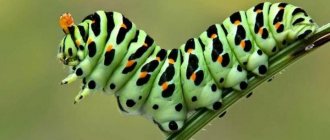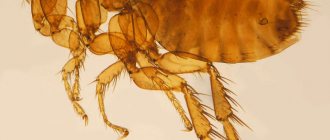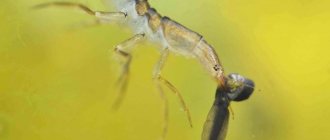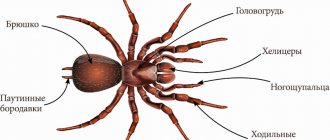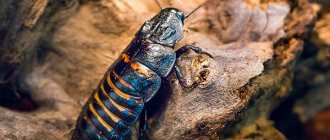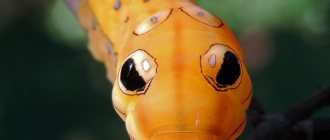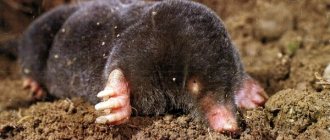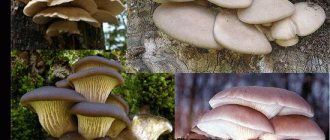What are caterpillars - are they insects or not?
Caterpillars are worm-like larvae of butterflies that belong to the order Lepidoptera. They hatch from eggs laid by adult butterflies and represent an intermediate stage of butterfly development. These creatures appear very tiny, but actively feed and grow. Once grown to the required size, the individual pupates, forming a cocoon. In the cocoon, a complete change in her body occurs, and from a worm she turns into a winged insect - a butterfly.
Varieties (types) of caterpillars
The larvae of different butterflies look different, and their descriptions can vary significantly. Their features have developed in the process of evolution and help the caterpillar live and grow in the most favorable conditions for it, as well as protect itself from enemies.
Characteristics by which the larvae of different butterflies are classified:
- nature of nutrition;
- nocturnal or diurnal lifestyle;
- habitat;
- the structure of various parts of the body;
- availability of protective devices.
According to the position of the head relative to the body
According to the position of the head relative to the body, caterpillars are divided into several types:
- orthognathic (the longitudinal axis of the head and the axis of the body form a right angle);
- prognathic (the longitudinal axis of the flattened head continues the axis of the body);
- semiprognathic (occupies an intermediate position).
The first type is the most common, the second is typical for species with a mining lifestyle. They eat out passages and tunnels in the pulp of leaves and fruits. The third type includes caterpillars that live secretly.
According to the structure of the sole
The sole is the terminal part of the abdominal legs. It has hooks and a retractor muscle. With the help of these devices, the caterpillars can move along a vertical plane, upside down and in any direction. Based on their structure, there are two types of soles:
- the hooks are located along the edge, and the retractor muscle is in the center;
- hooks are present only on the inner side, and closer to the outer side there is a muscle, part of the outer edge is covered with keratinized tissue.
By type of nutrition (polyphages, monophages, oligophages)
Most caterpillars feed on various parts of plants. Depending on food preferences, they are divided into 3 groups:
- polyphagous (can live and feed on different types of plants, for example caterpillars of moths);
- oligophages (feed on several related plant species: the swallowtail larva loves dill, fennel, parsnips and other umbelliferous plants);
- monophages (their body is adapted to process only one type of plant: the silkworm feeds exclusively on mulberry leaves).
However, plants are not the only source of nutrition for small voracious creatures. Some of their varieties eat wood (xylophages), mushrooms (bagworm larvae), honey or beeswax (moth larvae), wool and leather (moth larvae).
Some rare species, such as the caterpillars of the bear butterfly and the cotton bollworm, eat not plants, but their fellows. They choose small, weakened individuals as victims.
By way of life (free or secretive)
According to their lifestyle, all caterpillars are divided into two groups: free-living and secretive. Free-living species are able to move through open spaces, for example from one plant to another. Some of them, especially poisonous ones, are painted in bright colors, while camouflage is important for others.
Secretive species prefer to live in a secluded place, out of public view. As a rule, such caterpillars have a nondescript color and are not armed with protective outgrowths.
Habitat of secretive caterpillars:
- soil (underground caterpillars);
- water (underwater caterpillars);
- leaves twisted in a special way (leaf rollers);
- pathological growths on stems or leaves (gall formers);
- pulp of fruits (codling moths), roots;
- wood (xylophages).
Types of caterpillars
Most caterpillars live on the ground, on various plants. They can live in colonies or alone, be beneficial or cause great harm.
Cabbage caterpillar
The caterpillar of the cabbage white butterfly is light green in color with 16 pairs of legs and 35 mm in length. As the name suggests, they feed on cabbage, but don't mind trying radishes, horseradish, turnips and shepherd's purse.
Cabbage caterpillar.
Moth
A long, thin caterpillar surveyor with an unusual method of movement. A very large family with colorful representatives that have good immunity.
Moth caterpillar.
Great harpy butterfly caterpillar
The caterpillar with an unusual purple diamond and a white border on the back can reach a length of 60 mm. She is interesting for her behavior; in a dangerous situation she swells and sprays poison.
Great harpy caterpillar.Silkworm
This is a very useful butterfly that brings silk to people. The paired silkworm caterpillar feeds mainly on mulberries, this is the main raw material for creating threads. The caterpillar is being actively reared.
Paired silkworm.Gypsy moth
Unlike his brother, he is a real pest. The gypsy moth eats large quantities of green parts of plants.
Gypsy moth.
Swallowtail butterfly caterpillar
A bright and unusual caterpillar of the swallowtail butterfly with a colorful appearance that changes several times during its life. The insect is first black, then becomes partly green with orange stripes. Loves greenery in the garden.
Ursa butterfly caterpillar
Large, unusual caterpillars with a bright “hairstyle” of protruding hairs. Caia bear butterfly caterpillars love to feast on blackberries, raspberries, apple trees and pears. It is not recommended to touch these cuties; their hairs cause irritation.
Leaf rollers
A whole family with a huge appetite - leaf rollers. The insects are small but very common. The larvae eat leaves, fruits and inflorescences. With severe infection in the fall and spring, even the kidneys will suffer.
Leaf roller.
Hawthorn caterpillar
Long dark insects with light hairs and excellent apatite are hawthorn caterpillars. They eat a lot of green plantings very quickly.
Hawthorn caterpillars.
Lacetail caterpillar
The golden silkworm caterpillar is very brutal. Especially on shrubs and fruit trees. It settles in colonies and very quickly gnaws at any plantings.
Lacetail caterpillar.
Poisonous caterpillar
The unusual caterpillars were described in the scientific publication Science Alert. We are talking about the so-called cat moth caterpillars (Megalopyge opercularis). They are very common in the southeastern and central parts of the United States, as well as Mexico. They were not particularly found in Virginia, but in 2021 their numbers suddenly increased. In Russia it is impossible to stumble upon them, but lately the world has become unpredictable. No one really expected to see these creatures in Virginia either, but nature gave a surprise. And hardly anyone is happy about this surprise - the Internet is full of stories where these caterpillars caused terrible torment for many people.
The cat moth itself is also fluffy
Hairy caterpillars typically feed on oak and elm leaves, according to the state Department of Forestry (VDOF). But sometimes they can be found in parks and near buildings. The back of these creatures is covered with long hair-like bristles. At an early stage, these bristles begin to curl strongly and from a distance the caterpillars look like balls of fur. Under this thick hair there are poisonous thorns, which it is better for people and animals never to touch.
Danger of caterpillars
It is not known what exactly toxic substances are contained in these thorns, but we know the consequences of contact with them. In almost all cases, people experience severe redness and swelling at the site of contact with the thorns. Some people also experience severe headache, fever, nausea, rapid heart rate, cramps and abdominal pain. As you can see, there is nothing good about contacting them.
Luckily, most caterpillars are harmless.
In some cases, contact with hairy caterpillars can land you in the hospital. In 2021, one of these caterpillars fell from a tree onto a 5-year-old girl, Adrie Chambers. The girl's arm went numb and she was taken to hospital where she was treated with steroids. In May 2021, one woman spoke about the consequences of her 5-year-old son stepping on a poisonous caterpillar. Such incidents happen almost every year, but this year there are clearly many more of them. However, this is not surprising - 2021 will shock us with might and main.
Caterpillars often get on clothes when falling from trees.
There are no such poisonous caterpillars in Russia, but if they appear or you ever go to the USA, you need to be prepared to encounter these creatures. The first thing to do after coming into contact with a hairy caterpillar is to stick a strip of tape to the skin and quickly tear it off. This way you can quickly get rid of poisonous thorns. If ailments occur, of course, you should not self-medicate. After all, we already know very well that most folk recipes do not bring any benefit? So, if you come into contact with any poisonous animal or plant, it is best to go to the hospital as soon as possible.
If you like our articles, subscribe to us on Google News! This will make it easier for you to keep track of new materials.
It is important to note that cat moth caterpillars are far from the only ones of their kind. Throughout Europe, as well as in Kazakhstan, Siberia and other regions of our planet, you can stumble upon the caterpillar of the female bear (Arctia caja). Most often you can come across them from September to May. These black caterpillars with long hairs can sting with caiine spikes. When contacting them, humans and other mammals experience so-called lepidopterism. This is the name for skin irritation that causes severe itching.
Breeding at home
For breeding butterflies, choose a spacious container with a lid through which oxygen will pass. Cover the bottom with sphagnum moss, under which soil is placed. The height of the flooring is up to 2 cm. A frequent guest of such insectariums is a fluffy caterpillar, the name of which depends on its appearance.
For example, if you have a black hairy caterpillar, what is it called, it is not difficult to find out. If there are yellow dots, it's a mistress. If not, it is most likely urticaria. The furry black and orange creeper belongs to the kaya. It is interesting to watch how a black furry caterpillar pupates; what kind of butterfly will appear in the end will essentially become clear after 8 months.
In order for the insect to hibernate, the temperature drops to +3/+6 °C. Before this, she is fed fresh leaves. Once the pupa emerges, access to light is limited until hatching. After the butterfly appears, cotton wool soaked in a honey solution is used for feeding. As a result, a bear butterfly will appear, the photo of which will become your pride.
kaya (lat. Arctia Caja)
Types of caterpillars with photos and names
Each type of butterfly has its own caterpillar. At the same time, the color of the caterpillar does not always match the color of the butterfly. In most cases, caterpillars are herbivores, although predatory species are also found. Depending on the food consumed, caterpillars are:
- Polyphages . These are caterpillars that indiscriminately eat any plant. This species includes moths such as the wine hawk moth, the ocellated hawk moth, the blind hawk moth, the kaya bear, moths, the peacock eye and others.
- Monophages are caterpillars that feed on one specific type of plant. These are cabbage grass, apple moth, silkworm and others.
- Oligophages are caterpillars that prefer to feed on one type of plant belonging to one species of family or type. These are butterflies: swallowtail, pine cutworm, polyxena, etc.
- Xylophages are a type of caterpillar that feeds on wood or bark. These include leaf rollers, woodworms and others.
Certain species of caterpillars inhabit subtropical regions, tropics, and northern regions. There are hundreds of species of such insects on the territory of each country. It is not by chance that caterpillars get their names. As a rule, they get their names depending on their main source of food. Some of the caterpillars were named so because they have a very interesting and intricate pattern on their wings.
Among all types of caterpillars, there are also valuable ones, such as the silkworm. Many caterpillars have a similar property. As the caterpillar moves, a thin thread remains behind. This thread serves as a kind of insurance in case an insect falls.
Interesting to know! Silk thread is obtained from the cocoon of the silkworm butterfly, after which silk fabric is woven from it, and then various products are sewn.
There are caterpillars up to 1 mm in size, as well as caterpillars more than 12 cm long. Among them there are quite beautiful specimens, completely inconspicuous, hairy, poisonous, and also those that can change their coloring during their development.
The following species are widespread in Russia:
- Cabbage white (cabbage).
- Peacock eye.
- Moth (land surveyor).
- Clothes moth.
- Redtail.
- Hawkmoth.
- Admiral.
- Swallowtail.
Amazing transformation Watch this video on YouTube
Cabbage butterfly
This is the most common type of caterpillar inhabiting the European part of Russia. The caterpillar is distinguished by its green color and body length within 3-4 cm. There are black growths and hairs on the body of the caterpillar. It got its name because it appears mainly on cabbage. In addition to cabbage, he can enjoy such crops as:
- Radish.
- Turnip.
- Turnips.
- Horseradish, etc.
An insect can remain in the caterpillar stage from 2 to 5 weeks. Depending on weather conditions. Despite such a short period of time, cabbage manages to cause serious damage to the crop.
Moth
This caterpillar is also called a land surveyor because of its original method of movement. This is due to the underdevelopment of the front false legs. Thanks to its brown coloration, it manages to reliably camouflage itself among vegetation. In addition, thanks to the developed muscular system, the caterpillar can remain in an elongated, motionless state for a long time, depicting a broken twig or twig. This type of caterpillar feeds on tree needles, currant leaves, hazel, etc. The moth butterfly is distinguished by a thin, elongated body and wide, delicate wings. Butterflies fly mainly at night. They can be easily recognized by their slow and bumpy flight.
Redtail
This caterpillar can be found throughout the forest-steppe zone of our continent. It feeds on the foliage of various bushes. These are fluffy caterpillars whose bodies are covered with brown or gray hairs. The end of the body is distinguished by a bright scarlet color, which served as the basis for this name.
Interesting to know! The bright red tail of the insect indicates that the caterpillar is poisonous. Upon contact with the human body, an allergic reaction may occur.
The summer of butterflies is celebrated in the month of May-June. The redtail is quite prolific, as one female can lay up to 1000 eggs per tree. With the arrival of autumn, all the caterpillars leave the tree and the pupation process begins.
Redtail is considered a pest of fruit trees such as apple, plum, rowan, pedunculate oak, hornbeam, elm, etc.
Swallowtail
It is quite large in size. The caterpillar is distributed throughout almost the entire territory of Europe, Asia, North America, as well as in the north of the African continent. The caterpillar is quite beautiful, just like the butterfly itself. At the same time, at its stage of development the caterpillar changes its color. At first the caterpillar is almost black with bright red spines. Over time, it turns green with black stripes, mixed with brown spots. This caterpillar can feed on:
- Carrots.
- Parsley.
- Celery.
- Wormwood.
- Alder.
Blind Hawkmoth
The hawkmoth caterpillar can be found both in central Russia and in Siberia and the Far East. Prefers to eat leaves of birch, willow, and poplar. The caterpillar has a green body color, which allows it to camouflage perfectly among the leaves. The body is painted with diagonal thin stripes, which resemble the veins of leaves. You can see a kind of horn on the tail of this caterpillar.
Peacock eye
This is a rather beautiful butterfly, which is distinguished by its relatively large size: its length reaches 10 cm, or even more. There are 2 types of these butterflies: the day peacock eye and the night peacock eye. In addition, there is also a large peacock eye butterfly, which has insignificant differences from the first two species. The butterfly caterpillar is also large and green in color. The peacock eye lives in the western part of Russia, the Caucasus and Crimea. Prefers the following fruit trees for food:
- Apple tree.
- Pear.
- Walnut.
- Plum.
- Cherry.
Interesting to know! During the development process, the peacock butterfly larva changes its color. Before pupation begins, it turns yellow, and the pupa itself is distinguished by a brown tint.
Clothes moth
Who hasn't encountered a clothes moth in their life? It is difficult to find such a person, since everyone knows the results of its life activity: clothes moth larvae spoil people's personal belongings. A white caterpillar with a brown head eats items made of natural wool, fur items and items made of cotton. This is where she lays her eggs.
On a note! Clothes moths can remain in the larval stage from a month to several years. The caterpillar may not eat for several days, enduring temperature changes.
The caterpillars of this butterfly are classified as the smallest, since their length is in the range of 1-12 mm. The size depends on the availability of food supply. This pest is found almost everywhere, from the European-Asian continent to North America, Australia and African countries.
Admiral
This is a large, hairy butterfly, black and orange in color. Distributed throughout many regions of Russia. Refers to migratory insect species. It lays eggs in the northern regions on nettle or hop leaves, and this insect overwinters in the southern regions.
Interesting to know! The caterpillars of the hives butterfly are very similar to the caterpillars of the admiral butterfly.
This small black caterpillar is distinguished by the presence of yellow stripes on the sides of its body. It appears on the leaves in the month of May and for several days builds a kind of canopy around itself from the leaves on which it feeds. The caterpillar stays in this shelter all summer, and at the end of August it turns into a pupa.
15 most dangerous CATERPILLARS in the world that you should not touch Watch this video on YouTube
Tailed Emperor Butterfly (Polyura Sempronius)
This is not a dinosaur, but a soft imperial caterpillar. Its size is up to 2 cm, and the shell visually enlarges the baby and scares the birds.
The “tailed emperor” is found only in Australia and feeds on nectar from only one plant.
Dalcerida (Acraga coa)
The Dalcerida caterpillar appears glassy and transparent.
At the same time, the butterfly itself is very shaggy, brick-colored. Refers to moths. Lives in the tropical forests of Mexico.
Greta Oto, or Glass Winged Butterfly
The caterpillar of the incredible Greta butterfly looks ordinary and does not attract attention.
But the glass butterfly with transparent wings looks simply amazing. This species lives in Mexico and throughout South America.
Large harpy or spotted forktail (Cerura vinula)
Both the caterpillar and the harpy butterfly itself have a rather terrifying appearance. The growth in the form of a mustache confuses the birds, and they do not risk feasting on this completely edible larva.
The white moth from the Corydalis family is quite large and emits an unpleasant odor, so few people would dare try it.
Slug worm (Isochaetes beutenmuelleri)
This gorgeous caterpillar looks like an ornate ice crystal covered with numerous needles. The sight of it seems completely unappetizing to the birds!
And the adult butterfly is an ordinary night woodlice. Distributed throughout North America.
Silkmoth (Hubbard's Small Silkmoth)
This is exactly the famous caterpillar that makes silk thread, and people make wonderful fabric from it. These larvae eat only mulberry or mulberry leaves.
The silkworm butterfly is nocturnal.
Large caterpillars
There are also some caterpillars that are distinguished by their large size. Although they are not record holders, they are quite impressive with their dimensions.
Birch moth
A long, gray-brown caterpillar that camouflages itself with the color of wood. The body is thin, but long and powerful, the muscles are well developed.
Wine Hawkmoth
The pest is about 50 mm long and lives among grape leaves. It can be green, brown or black. There is a horn at the tip of the tail.
Scented woodborer
Large pink or red-brown caterpillars up to 12 cm in size. They live mainly on old poplars, in special chambers.
Peacock eye
Large yellow-green caterpillars can reach a size of 100 mm. Each segment is covered with hairs with thickened tips.
Swallowtail
A common species of large-sized butterfly with unusual-looking caterpillars. The body is orange-black, with stripes and spots.
The largest caterpillars.Reasons for the appearance of caterpillars in an apartment or private house
Insect caterpillars emerge only from larvae. If moth eggs were found in the house, it means that an adult moth entered the house through a window or doorway. This species loves damp places, so if the ceiling leaks a little, the moth will definitely settle on it.
Also, people themselves can often bring larvae into the apartment without noticing it. Caterpillars live in cereals, walnuts or candies. They also live in flour or dried fruits. Food products are susceptible to contamination due to poor processing or long shelf life.
The reason for the appearance of caterpillars is favorable conditions for reproduction and living. In addition to ceilings, caterpillars live in beds and sofas filled with fabric. It is important to quickly get rid of parasites, otherwise they will multiply at high speed.
Control measures for different species
Various measures are taken to control pests. Most likely, you will have to try everything, since insects can quickly get used to the substance that kills them. First of all, it is necessary to completely clean the room in those places where the caterpillars were found.
Chemicals for the apartment
Chemicals to combat larvae are sold in the form of aerosols. They contain poison that destroys the shell of insects and kills them. In this way, you can quickly get rid of parasites by destroying the entire colony. When processing, the owner of the house or apartment must wear protective clothing and a respirator.
It is recommended to remove all personal care items and food items before cleaning. After treatment, the room cannot be used for its intended purpose for 24 hours. Then the apartment or house is thoroughly washed, throwing out the corpses of the caterpillars. The room must be ventilated so that vapors of toxic substances do not enter the human lungs.
Preparations to combat caterpillars:
- aerosols Spark and Karate;
- Lightning;
- Rovikurt;
- Raptor;
- Aktara.
If not all parasites died immediately, it is recommended to change the drugs, since the caterpillars get used to the poison and it becomes not dangerous for them.
Important. You should use preparations containing chemicals only if there are a large number of parasites in the apartment. Poison vapors are harmful to the human body and can cause intoxication. Before processing, it is important to carefully read the instructions and strictly follow them.
Chemicals also include moth traps. They contain a substance that disorients insects, preventing their reproduction. The range of such funds is very wide. Before installing the trap, you should carefully study the instructions for use.
Mechanical measures
Mechanical measures are the simplest solution to rid your apartment of insects. However, they are not always effective. In order to get rid of parasites, you need to collect their larvae with your own hands. Before this procedure, gloves are worn, as some insects have protective hairs and spines that cause allergies or redness of the skin in people.
Mechanical effects include the creation of baits. To hatch adults and then remove eggs, you should take a jar with a large amount of spices or sweet products. Insects will smell the smell and come to it. This method is effective only if pests have just been discovered in the apartment, and there are not many of them.
Also, to get rid of caterpillars, owners keep birds that feed on these insects. A pet will not only save you from new neighbors, but will become a favorite in the family.
To get rid of the larvae, the owner of a private house or apartment should place bacteriological preparations (bitoxibacillin or lepidoicide) in the place where the parasites live. After eating them, both mature individuals and caterpillars will die.
Traditional methods
Traditional methods have always helped people in the fight against insects. Many plants contain substances that kill caterpillars and larvae.
- Elder. Insects hate the smell of red elderberries. To get rid of caterpillars, you need to prepare a solution consisting of boiled stems and leaves of the plant. 100 g of these ingredients are crushed and boiled in 5 liters of boiling water. Then the product sits for 24 hours. After settling, the solution is passed through cheesecloth, removing the remains of the plant. Add crushed laundry soap to the prepared liquid. It is necessary to moisten with this solution those places where insect larvae were noticed.
- Henbane. Henbane has a similar effect to elderberry leaves. A decoction is prepared from small branches, which are placed in a small amount of water - approximately 1 liter. You need to let the liquid sit for 12 hours, and then spray it on infected areas.
- Red pepper tincture. To get rid of caterpillars, you need to pour 1 kg of red pepper with 10 liters of hot water. Boil the mixture for 60 minutes, and then let it brew for 24 hours. The finished liquid is re-diluted in water. It is important to observe the grams: for 12 g of decoction you need to pour 10 liters of water. The resulting concentrate is sprayed on the areas where the caterpillars live.
- Onions with garlic. Caterpillars cannot tolerate the smell of these vegetables, as well as the oils they contain. It is enough to spread the heads of onions and garlic in places where parasites are found. After some time, the caterpillars will die or crawl out of the apartment.
- To get rid of small black caterpillars in the house, use steam or smoke. High temperatures have a bad effect on insects, destroying their protective shell. The owner of the apartment needs to use a steam cleaner and walk with it in the places where the caterpillars have settled. High pressure and temperature will kill the adults as well as the embryos in the eggs.
Little green caterpillar
Little Green Caterpillar Fairy Tale
Once upon a time there lived a small green caterpillar at the edge of the forest. She lived on a tree, or rather on a birch tree. Forests are different. There are coniferous forests with a predominance of spruce and pine. There are mixed forests in which spruce and pine grow, as well as birch, alder, and rowan... And there are birch forests. Or more precisely – birch groves. So, it was on the edge of the birch grove that the heroine of our fairy tale lived - a small green caterpillar. Although the caterpillar was small, it was kind and very inquisitive.
One day a large brown beetle flew to the edge of the forest. The caterpillar crawled up to him and asked: “Who are you?” - I'm a big brown beetle. - The beetle answered. - Let's be friends with you! – Suggested by the little green caterpillar. “How can I be friends with you,” said the beetle. - You are ugly. And you can’t fly at all!
And the beetle... flew away! And the little green caterpillar cried bitterly, sitting on a green birch leaf.
- Why are you crying? – the little caterpillar heard someone’s voice and turned around. A gray bunny stood next to the birch tree and looked trustingly at the green caterpillar. “I’m crying because a big brown beetle didn’t want to be friends with me.” - Do you want me to be friends with you? – asked the little gray bunny. - Want! - answered the little caterpillar. - Come on, play hide and seek. - The bunny suggested. - Just, mind you, I’ll hide first! - Fine. – Our heroine agreed. And the bunny hid behind a birch tree.
- I see you, gray bunny! The little caterpillar screamed joyfully. “Now I’ll hide...” And she hid behind a birch leaf. The bunny began to count: - One, two, three... I'm going to look! For a long time the gray bunny was looking for a green caterpillar. Have not found. And... galloped off into the forest! Our caterpillar sat on a birch leaf and cried again.
A hedgehog ran out to the edge of the forest. He heard someone crying and asked: “Who is crying here?” - I'm crying. - Answered the little caterpillar. - The bunny got tired of being friends with me, and he ran into the forest... Will you play with me? - asked the little caterpillar. - No, I'm looking for a field mouse. I want to play with it and then eat it! I am very hungry. - The hedgehog answered. - Aren `t you ashamed! Is it possible to eat those you play with? Is it possible to eat your friends? - What should I do? – The hedgehog asked the little caterpillar. — What else do you like to eat? – she asked. “I like apples, vegetables, I drink milk...” answered the hedgehog. — A wild apple tree grows not far away. If you want, I'll take you to her. There are always apples under the apple tree. And you will be full. - Thank you, little caterpillar. – The hedgehog thanked, planting apples on his needles. “I’ll go home and treat mom and dad.” The day was drawing to a close. The sun went below the horizon, giving a beautiful orange sunset to all the inhabitants of the forest. The moon has risen in the sky...
And early in the morning a large brown beetle flew to the edge of the forest. Then the bunny galloped up, followed by the hedgehog. They felt ashamed of their behavior. After all, the little green caterpillar offered them its friendship, but the brown beetle, bunny and hedgehog did not reciprocate...
- Little green caterpillar, where are you? Come out! We came to be friends with you! “They all shouted together.
But the green caterpillar did not come to their call. Only a very beautiful red-brown butterfly with large carved wings, at the top of which there were circles reminiscent of the smart, kind eyes of a small green caterpillar, flew out to meet them.
-Have you seen the little green caterpillar, swallowtail butterfly? - Friends asked. “I was the little green caterpillar.” Overnight I turned into a butterfly - a swallowtail. - Is it true?! - The brown beetle, the bunny and the hedgehog were delighted. - How did this miracle happen? - They asked.
- At first we are green caterpillars, and then we turn, like in a fairy tale, into... butterflies!
- How glad we are! – The beetle, the bunny and the hedgehog were talking, interrupting each other. We came to apologize to you. And say that we agree to be friends with you!
And the big brown beetle, the little gray bunny, the hedgehog and, of course, our butterfly happily twirled in a round dance! They had fun! And this joy was transmitted to all the inhabitants of the edge and birch grove!
Penetration methods
As mentioned earlier, caterpillars can enter the apartment along with food in the kitchen. However, in addition to this, pests can be seen in other parts of the house.
- If the owner finds white caterpillars with a yellow tint in his apartment, then most likely furniture moth larvae have infested the furniture. They can also be detected by their fabric cocoons, which contain small white balls that look like dark rice. These insects can enter the house with purchased furniture. If the warehouses had unsanitary conditions suitable for insect life, then the larvae “came” to the house from there. The maturation stage of furniture moths is 3 months. The larvae grow at temperatures from 20 to 25 degrees. Apartment owners may not know about new neighbors for a long time, so when purchasing furniture you should carefully check the interior upholstery.
- Also, with the purchase of furniture, flea larvae can enter the house. They are not terrible for people, since they feed on dead human tissue, hair or synthetic fabric, which is a lot of furniture. When fleas grow up, they become dangerous to humans because they begin to drink blood. They can also be brought into the house with vegetables and pet products (rugs, bedding). If the house is old, then the larvae like to hang around in wooden planks.
- Pests are found in new mattresses and pillows. Clothes moth larvae look like small white worms with 6 pairs of legs. They can be identified by the silk case in which they live. They feed on the remains that humans leave behind: sweat, greasy food stains, hair.
- Carpet beetle caterpillars can get into your home with new carpet. Their elongated body has alternating brown and golden stripes. These larvae are found in clothing and pillow feathers.
- You should not take old furniture from your hands. If necessary, the boards should be checked. Caterpillars of grinder beetles can live in them. They live in the same furniture for about 20 years. They are very harmful to wooden materials and can then climb into other furniture. The larva is distinguished by its gray, fleshy body with spines on its head. Over the course of its entire life, this insect can chew through 50 km of wood.
- Due to dampness in the toilet and bathroom, silverfish larvae settle on the ceiling and walls. They have a white or silver body with a black shell. They don't like light, so they prefer the gaps between baseboards. Such insects live for 4 years and reproduce very quickly.
- If the kitchen is not clean, in addition to food moths, fly caterpillars may appear. They look like white worms. They are very dangerous because they spread infections. You should get rid of such neighbors immediately after discovering them.
Description of the largest caterpillar
The king nut moth caterpillar is the largest in the world and its appearance frightens people. The largest caterpillar lives in North America. It grows up to 15.5 cm in length, the body is green, covered with long spines.
The caterpillar has several large horns on its head, for which it is given the name “hickory horned devil.” This appearance confuses the caterpillar's enemies.
The largest caterpillar.
Caterpillar nutrition
The large insect feeds on walnut leaves and greenery from trees of the genus Caria, also belonging to the walnut family. The caterpillar eats as much as it needs to turn into a beautiful butterfly.
Nut moth caterpillar.
Nut moth
At the end of summer, a butterfly called the King Walnut Moth emerges from the caterpillar. It is very beautiful and large in size, but it is not the largest in the world. The King Nut Moth only lives for a few days and does not even eat. She emerges to mate and lay eggs, which will produce large green caterpillars with horns on their heads the following year.
King nut moth.
Tips and tricks
Unfortunately, none of the described means and methods of dealing with voracious aliens guarantees 100% deliverance from this scourge. It is best to prevent caterpillar attacks and eliminate the consequences of their invasion. These simple rules will help preserve your crops and garden:
- Provide plants with proper care. If you don’t know how to monitor certain crops, don’t be lazy and read the specialized literature.
- Try not to oversaturate the plantings, so that each plant is well ventilated and illuminated;
- Carefully inspect new shoots and seedlings for disease and pest damage;
- From time to time, weed the beds and loosen the soil;
- Fertilize plants with organic and mineral fertilizers in a timely manner.
Following these rules will help keep your garden in excellent condition, which will delight you with a rich harvest.
